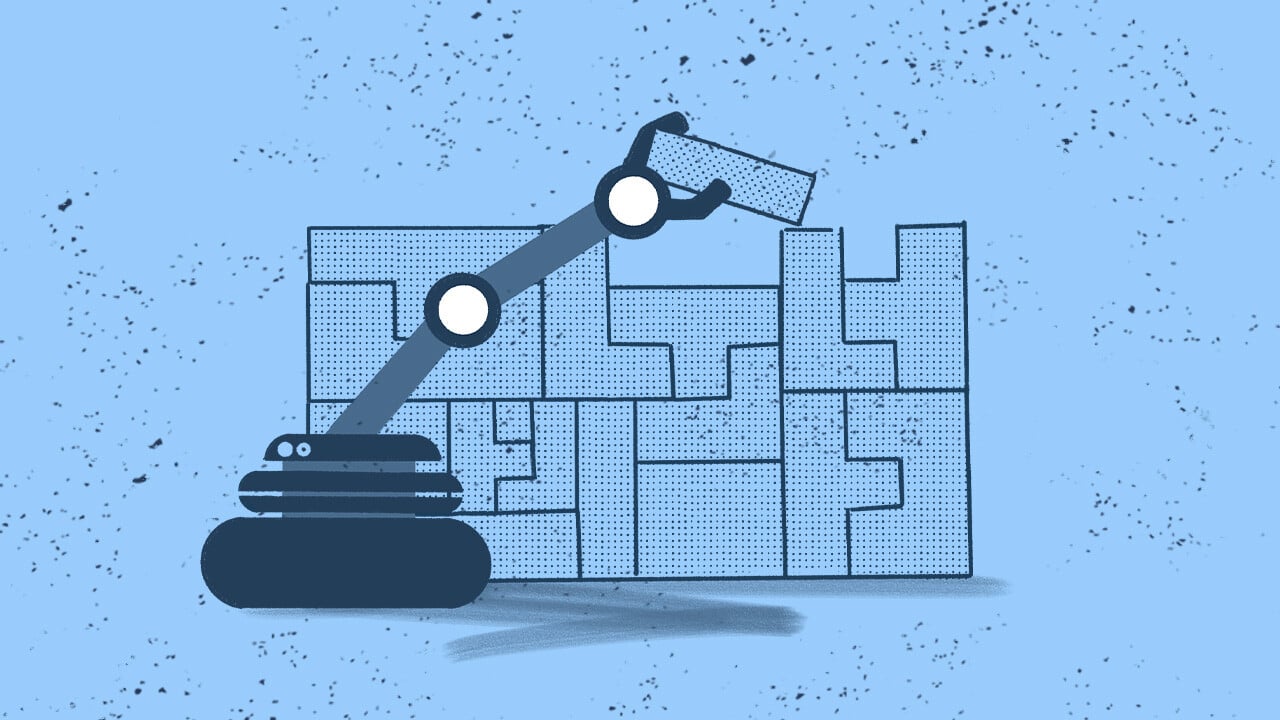With more information coming in from different sources, keeping it all organized, secure, and easily accessible can be a real challenge. Data governance tools help businesses maintain control over their data by offering ways to ensure accuracy, security, and compliance with various regulations.
In this article, we’ll explore what data governance tools are, why they’re useful, and what you should consider when selecting one for your organization. We'll also take a look at some of the top tools available today, their key features, and what sets them apart.
What is a data governance tool?
A data governance tool is software designed to help organizations manage and control their data to meet legal, business, and regulatory requirements. Data governance itself refers to the processes, policies, and standards that ensure data is accurate, accessible, and secure across an organization.
When dealing with large amounts of information, maintaining this level of control becomes a challenge. This is where data governance tools come in, providing a structured way to organize, track, and ensure the quality and compliance of your data.
For example, in industries like healthcare or finance, strict regulatory requirements around data privacy (such as GDPR or HIPAA) must be adhered to. Data governance tools make it easier for companies to comply with these regulations by providing clear frameworks for handling data, tracking its use, and auditing its management.
Why do you need a data governance tool?
Managing data efficiently has become a priority for businesses of all sizes. Poor data management can lead to inconsistencies, data breaches, and failed compliance audits, which can result in costly fines or damaged reputations. A data governance tool helps prevent these issues by offering a systematic approach to data management. Here’s how:
- Data quality improvement: Tools can identify and correct inconsistencies in data, such as duplicate entries or missing information, ensuring the accuracy of your data sets.
- Data compliance: As mentioned earlier, businesses need to adhere to regulations like GDPR, CCPA, or HIPAA. A governance tool will help track compliance by auditing data use and storing evidence for regulatory reporting.
- Better decision-making: When your data is accurate and well-organized, it becomes easier to make informed business decisions. Data governance tools ensure that your data remains reliable and up-to-date.
- Reduced risks: Data governance tools help detect anomalies and monitor access, which reduces the risk of unauthorized data access and data breaches.

How to choose the right data governance tool
With many options available on the market, selecting the right tool for your organization requires careful consideration. Here’s a guide to help you through the process.
1. Assess your data governance needs
Different organizations have different requirements. Are you focused on compliance? Do you want to improve data quality or manage access across departments?
Identifying the primary goal will help you narrow down your options. For example, if your main concern is regulatory compliance, look for a tool that offers audit trails and reporting functionalities.
2. Check integration capabilities
A governance tool should integrate seamlessly with your existing software and databases. This ensures that the tool can pull data from various sources, whether you're using cloud services, on-premise databases, or a hybrid environment. You’ll also want to ensure it integrates with business intelligence tools to support data-driven decisions.
3. Look for scalability
If your business is growing or expects to deal with increasing amounts of data, the tool should be scalable. Many solutions offer different tiers, making it easy to scale up as your needs evolve without switching platforms.
4. Consider ease of use and training
Some governance tools can be complex, requiring technical knowledge to set up and maintain. Choose a tool that matches your team’s capabilities or consider the amount of training required.
For example, if you have a non-technical team managing data governance, select software with an intuitive user interface and comprehensive customer support.
5. Analyze cost and ROI
Pricing models for data governance tools can vary significantly. Some tools may have high upfront costs but offer robust features, while others follow a subscription-based model. Always balance the cost with the potential return on investment by considering how the tool will reduce risks and improve operational efficiency.

Key features to look for in a data governance tool
Choosing the right tool also involves evaluating the specific features offered. Below are the most critical capabilities to keep in mind.
1. Data cataloging
A well-organized data catalog helps classify and index data assets, making them easier to find and manage. This feature is particularly useful for large organizations that deal with vast data sets. For example, a retail company can use a data catalog to keep track of its customer data across multiple systems.
2. Data lineage tracking
Data lineage features allow you to trace the flow of data from its source to its final destination. This is useful when troubleshooting errors, auditing, or ensuring compliance. By seeing how data transforms as it moves through your systems, you can ensure that it is being handled correctly.
3. Role-based access control (RBAC)
This feature ensures that only authorized users can access sensitive data. Role-based access control allows you to assign permissions based on the user’s role within the organization, which is crucial for maintaining security, particularly in highly regulated industries like healthcare or finance.
4. Automated workflows
Automation can help streamline processes like data validation, reporting, or audits. For instance, when new data is ingested, the tool can automatically check for errors, initiate corrective actions, or flag inconsistencies for review.
5. Compliance reporting
Given the importance of regulatory compliance, having built-in reporting features is essential. The tool should be able to generate reports that demonstrate compliance with data regulations, such as GDPR or HIPAA, making audits more straightforward.
6. Data quality monitoring
Effective data governance tools continuously monitor data quality. Look for a tool that automatically flags missing, outdated, or duplicate data and offers solutions for correcting these issues. Maintaining high-quality data improves decision-making and operational efficiency.

Top data governance tools in 2024
Here’s a look at some of the top data governance tools available today, based on their features, ease of use, and overall value.
1. Collibra
Collibra is known for its data governance and data cataloging solutions. It offers comprehensive data lineage tracking, data quality management, and automated workflows, making it ideal for large enterprises. Collibra’s platform integrates well with existing data lakes and cloud services, and its scalability makes it suitable for growing organizations.
Key features:
- Advanced data cataloging and classification
- Data lineage and compliance reporting
- Workflow automation and collaboration tools
Collibra continues is a leader in the market, having been recognized in The Forrester Wave™ for both Enterprise Data Catalogs and Data Governance Solutions.
2. Informatica Axon
Informatica Axon focuses on enterprise data governance and collaboration. It’s known for its user-friendly interface and comprehensive data lineage tracking. The tool also offers strong compliance and data privacy functionalities, making it a good fit for regulated industries.
Key features:
- Detailed data lineage and impact analysis
- Robust compliance and audit tracking
- User-friendly interface
3. Alation
Alation is a data governance platform known for its data catalog and search features. It offers collaborative data management capabilities, enabling teams to work together on data projects efficiently.
Key features:
- AI-driven data search and cataloging
- Collaborative data management
- Data stewardship and compliance tracking
Alation is also noted for its innovative approach to integrating AI into its platform, allowing for improved data quality insights.
4. IBM Cloud Pak for Data
IBM Cloud Pak offers a complete suite for data governance, with strong support for data privacy and security. It integrates AI-driven insights to enhance decision-making and provides robust tools for tracking data lineage and compliance.
Key features:
- AI-powered data governance
- Data privacy and security controls
- Scalable platform for enterprises
5. Talend Data Fabric
Talend’s platform focuses on integrating data governance with data management, ensuring that organizations can clean, govern, and monitor data throughout its lifecycle. It’s well-suited for companies needing end-to-end data management, from data ingestion to compliance reporting.
Key features:
- Data quality monitoring and correction
- Real-time data governance
- Compliance and audit features
6. Microsoft Purview
Microsoft Purview offers a comprehensive set of data governance and compliance tools designed to help organizations manage their data effectively across on-premises, hybrid, and multi-cloud environments. With a focus on compliance and privacy, it's a solid choice for companies already using Microsoft services.
Key features:
- Unified data governance and privacy management
- Metadata management and data lineage tracking
- Integrates seamlessly with Microsoft 365 and Azure
7. OvalEdge
OvalEdge combines data cataloging, governance, and analytics in a user-friendly platform. It offers robust features for data lineage tracking, access control, and compliance management. OvalEdge is ideal for organizations looking to manage their data across various environments.
Key features:
- Data cataloging and discovery
- End-to-end data lineage tracking
- Role-based access control and compliance tools
8. Ataccama ONE
Ataccama ONE is a data management platform offering powerful tools for data governance, quality management, and master data management. It stands out for its AI-driven data quality improvements and scalable architecture, making it suitable for large enterprises.
Key features:
- AI-powered data quality management
- Metadata management and governance
- Real-time data monitoring and reporting

Key trends in Data Governance
As we move into 2024, the landscape of data governance tools is evolving rapidly. With the increasing complexity of data environments and the growing importance of data privacy and compliance, organizations are adopting innovative strategies to manage their data effectively. Here are some key trends shaping the future of data governance.
1. Cloud-Based Solutions
The shift towards cloud-based data governance is gaining momentum. These solutions offer scalability and flexibility, allowing organizations to manage data across various platforms without being hindered by traditional silos.
Cloud environments enable easier access and collaboration, making it simpler for teams to work with data while maintaining compliance and security standards.
Integration of AI and Machine Learning
Artificial Intelligence (AI) and Machine Learning (ML) are becoming integral to data governance tools. These technologies automate various tasks, such as data classification, anomaly detection, and compliance checks.
Thanks to AI, organizations will be able to enhance their data quality, quickly identify inconsistencies, and predict potential issues before they escalate.
Data democratization
Data democratization is a growing trend that aims to make data accessible to all employees, not just those with technical expertise. This shift allows users to generate insights independently, fostering a culture of data-driven decision-making. However, it also necessitates robust governance frameworks to ensure responsible data usage and compliance with regulations.
Enhanced data lineage tracking
As organizations handle more complex datasets, the need for data lineage tracking becomes critical. This feature helps users understand the origin and transformation of their data, which is essential for compliance and auditing purposes. Improved lineage capabilities will enable organizations to maintain transparency in their data management practices
Conclusion
A data governance tool is a crucial component for any organization aiming to manage its data efficiently and comply with legal standards. When selecting a tool, prioritize features like data lineage tracking, role-based access control, and compliance reporting.
You can choose a data governance tool that improves data quality, reduces risks, and supports business goals effectively.















